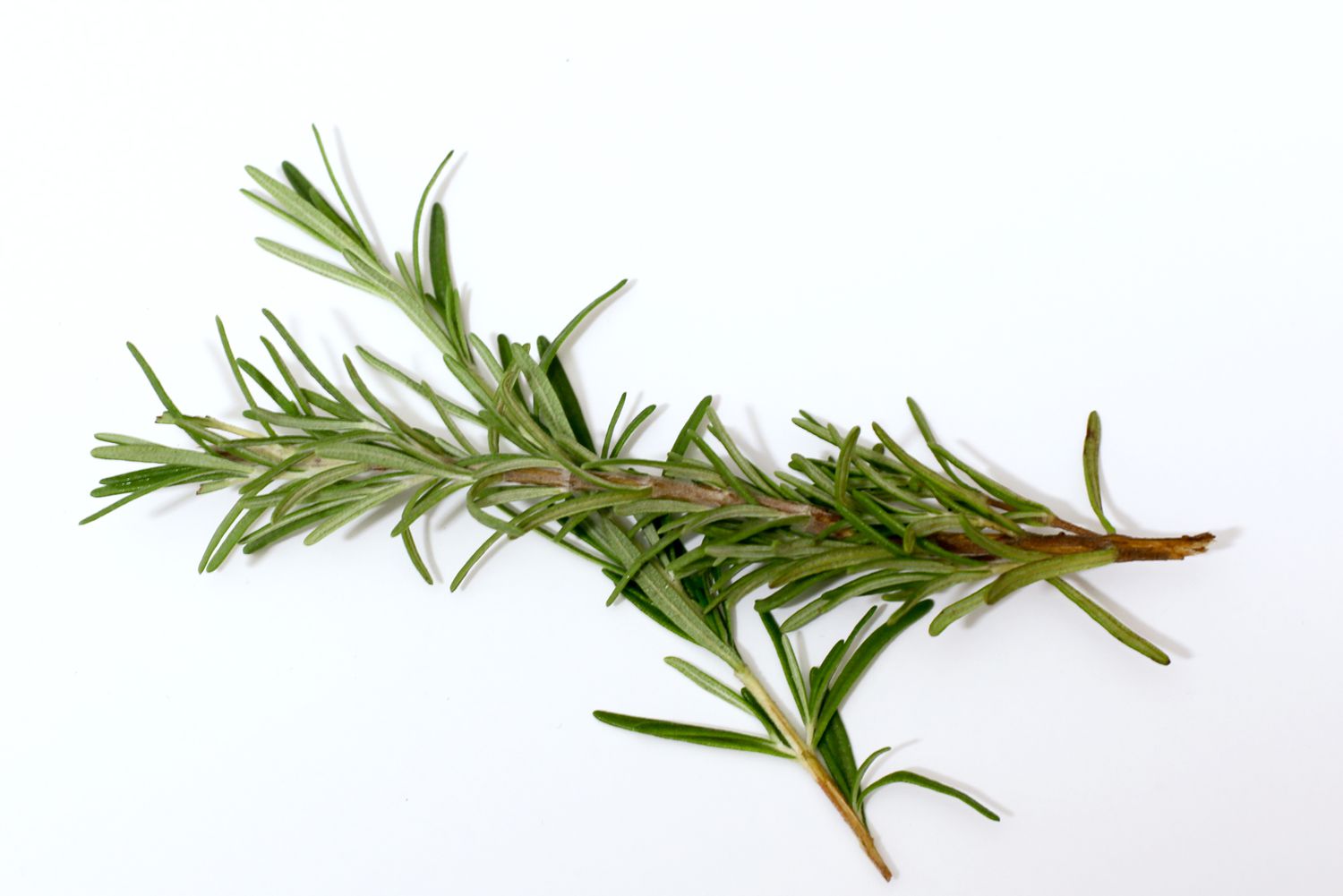Home>Types of Gardening>Edible Gardening>What Is A Rosemary Plant


Edible Gardening
What Is A Rosemary Plant
Modified: February 6, 2024
Discover the benefits of growing a rosemary plant in your edible garden. Learn how to care for and use this versatile herb for cooking and more.
(Many of the links in this article redirect to a specific reviewed product. Your purchase of these products through affiliate links helps to generate commission for Chicagolandgardening.com, at no extra cost. Learn more)
Table of Contents
Introduction
Welcome to the enchanting world of rosemary, a beloved herb that not only adds delightful flavor to culinary creations but also boasts a rich history and a plethora of beneficial properties. As we embark on this exploration of the rosemary plant, we will uncover its fascinating characteristics, optimal growing conditions, versatile uses, and the myriad health benefits it offers.
Rosemary, scientifically known as Rosmarinus officinalis, is a perennial herb with fragrant, needle-like leaves and delicate, aromatic flowers. Its name is derived from the Latin words "ros" (dew) and "marinus" (sea), signifying its natural habitat along the Mediterranean coast where it thrives in the sun-drenched, well-drained soil.
This remarkable herb has been cherished for centuries, revered for its culinary contributions, medicinal applications, and symbolic significance. Its association with remembrance and fidelity has made it a cherished addition to weddings, funerals, and other ceremonial occasions throughout history.
Join us as we delve into the captivating world of the rosemary plant, discovering its allure, versatility, and the myriad ways it enriches our lives. Whether you are an avid gardener, a culinary enthusiast, or someone seeking natural remedies, this exploration will surely kindle your admiration for this remarkable herb. Let's embark on this aromatic journey through the enchanting realm of rosemary.
Description of Rosemary Plant
Rosemary is an evergreen shrub that belongs to the mint family, Lamiaceae. It is characterized by its woody stem, needle-like aromatic leaves, and petite, two-lipped flowers that range in color from pale blue to white, depending on the variety. The plant typically reaches a height of 3 to 6 feet, with a spread of 1 to 4 feet, creating a visually striking presence in any garden or landscape.
One of the most captivating features of the rosemary plant is its aromatic foliage, which releases a distinct pine-like fragrance when gently brushed or crushed. The leaves are dark green on top and white underneath, providing an appealing contrast and adding ornamental value to the plant. In addition to its visual and olfactory appeal, rosemary is known for its culinary significance, as its flavorful leaves are widely used to enhance a variety of dishes.
Rosemary is available in several cultivars, each offering unique characteristics such as growth habit, leaf color, and fragrance. Some popular cultivars include 'Tuscan Blue,' known for its upright growth and intense aroma, 'Arp,' prized for its cold hardiness, and 'Golden Rain,' celebrated for its golden-hued foliage.
When it comes to propagation, rosemary can be grown from seeds, cuttings, or transplants. It thrives in well-drained, sandy soil and requires ample sunlight to flourish. This resilient herb is drought-tolerant once established, making it an ideal choice for water-wise gardening and arid climates.
With its striking appearance, delightful fragrance, and culinary versatility, the rosemary plant stands as a timeless favorite among gardeners, chefs, and herbal enthusiasts alike. Its enduring appeal and multifaceted nature make it a cherished addition to any garden, where it serves as a testament to the enduring charm of this beloved herb.
Growing Conditions
Rosemary thrives in a Mediterranean-like climate, characterized by ample sunlight, well-drained soil, and moderate humidity. When cultivating this resilient herb, it is essential to provide optimal growing conditions to ensure its vigor and productivity.
Light: Rosemary is a sun-loving plant that flourishes in full sunlight, requiring a minimum of 6 to 8 hours of direct sunlight daily. When selecting a site for planting, choose a location that receives abundant sunlight, such as a south-facing slope or an open area free from shading obstructions.
Soil: Well-drained, sandy soil with a slightly acidic to neutral pH is ideal for rosemary cultivation. The soil should be loose and friable, allowing for efficient drainage to prevent waterlogging, which can lead to root rot. Amending the soil with organic matter, such as compost or well-rotted manure, can enhance its texture and fertility, promoting robust growth.
Water: While rosemary is drought-tolerant once established, it benefits from regular watering during the initial establishment phase. After planting, provide consistent moisture to support root development. Once the plant is established, reduce watering frequency, allowing the soil to dry out between waterings to prevent waterlogged conditions.
Temperature: Rosemary thrives in warm temperatures and is sensitive to frost. In regions with cold winters, consider growing rosemary in containers that can be brought indoors during the winter months or provide protection from frost using frost cloth or mulch.
Container Cultivation: For gardeners in regions with challenging climates, rosemary can be successfully grown in containers. Select a spacious container with adequate drainage holes, fill it with well-draining potting mix, and place it in a sunny location. Container-grown rosemary may require more frequent watering than those planted in the ground, as the soil in containers tends to dry out more rapidly.
By creating an environment that mimics the natural habitat of rosemary, including ample sunlight, well-drained soil, and appropriate moisture levels, gardeners can cultivate thriving rosemary plants that yield an abundance of aromatic foliage, enhancing both culinary endeavors and garden landscapes.
Uses of Rosemary
Rosemary is a versatile herb celebrated for its myriad uses, extending beyond the culinary realm to encompass medicinal, aromatic, and ornamental applications. Its fragrant foliage and flavorful leaves have earned it a cherished place in kitchens, gardens, and herbal traditions, where it continues to captivate and inspire enthusiasts worldwide.
Culinary Delights: The culinary applications of rosemary are diverse and abundant. Its robust, pine-like flavor complements a wide range of dishes, including roasted meats, poultry, vegetables, soups, and stews. Whether used fresh or dried, rosemary adds a delightful depth of flavor to culinary creations, infusing them with its distinctive aroma and savory notes.
Aromatic Enhancements: The aromatic allure of rosemary extends beyond the kitchen, as its fragrant foliage is prized for its ornamental and aromatic qualities. Sprigs of fresh rosemary can be used to create aromatic bouquets, potpourri, and herbal sachets, infusing living spaces with a refreshing, invigorating scent.
Medicinal and Therapeutic Applications: Rosemary has a rich history of medicinal use, revered for its potential health benefits. It is believed to possess antioxidant, anti-inflammatory, and antimicrobial properties. Rosemary essential oil, derived from the plant’s leaves, is utilized in aromatherapy for its invigorating and clarifying effects, promoting mental clarity and emotional well-being.
Garden Ornamentation: Beyond its culinary and aromatic attributes, rosemary serves as an ornamental gem in garden landscapes. Its evergreen foliage, delicate flowers, and upright growth habit make it a visually appealing addition to herb gardens, borders, and container plantings. Additionally, rosemary can be shaped into topiaries or hedging, adding architectural interest to outdoor spaces.
Cultural and Symbolic Significance: Throughout history, rosemary has been steeped in cultural and symbolic significance. It is associated with remembrance and fidelity, making it a cherished symbol in weddings, memorial services, and commemorative rituals. The tradition of wearing or carrying sprigs of rosemary as a token of remembrance has endured through generations, honoring its enduring symbolism.
Embraced for its culinary allure, aromatic charm, medicinal potential, and symbolic significance, rosemary continues to captivate and enrich our lives in multifaceted ways. Whether adorning a savory dish, perfuming the air with its fragrance, or imparting a sense of tradition and reverence, the enduring appeal of rosemary resonates across cultures and generations, embodying the timeless allure of this beloved herb.
Health Benefits of Rosemary
Beyond its culinary and aromatic appeal, rosemary is revered for its potential health-promoting properties, offering a myriad of benefits that have been cherished for centuries. This versatile herb is rich in antioxidants, essential nutrients, and bioactive compounds, making it a valuable addition to holistic wellness practices and natural remedies.
Antioxidant Powerhouse: Rosemary is packed with potent antioxidants, including rosmarinic acid, carnosic acid, and essential oils, which help combat oxidative stress and protect the body from free radical damage. These antioxidants contribute to overall health and well-being, potentially reducing the risk of chronic diseases and supporting cellular health.
Anti-Inflammatory Effects: The bioactive compounds in rosemary, particularly rosmarinic acid and carnosic acid, exhibit anti-inflammatory properties, which may help alleviate inflammation in the body. This makes rosemary a valuable ally in promoting joint health, reducing inflammation-related discomfort, and supporting overall mobility.
Cognitive Support: Rosemary has been linked to cognitive enhancement and mental clarity, attributed to its aromatic compounds that may support cognitive function. The invigorating scent of rosemary has been associated with improved focus, memory retention, and mental alertness, making it a popular choice for promoting mental acuity and concentration.
Digestive Aid: The consumption of rosemary has been associated with digestive benefits, including promoting healthy digestion and alleviating occasional digestive discomfort. Its aromatic properties may stimulate the appetite and support digestive function, contributing to overall digestive wellness.
Respiratory Health: The inhalation of rosemary essential oil is believed to have respiratory-supporting effects, potentially aiding in promoting clear breathing and respiratory comfort. Its invigorating aroma may offer relief during seasonal challenges and provide a sense of respiratory clarity and comfort.
Stress Relief and Mood Elevation: The aromatic compounds in rosemary essential oil have been utilized in aromatherapy for their potential to promote relaxation, alleviate stress, and uplift the mood. The refreshing scent of rosemary may help create a soothing ambiance, fostering emotional well-being and mental relaxation.
Embraced for its potential to promote overall well-being, rosemary stands as a testament to the multifaceted benefits of natural herbs in supporting holistic health. Whether enjoyed in culinary creations, utilized in aromatherapy, or integrated into traditional wellness practices, the health-enhancing properties of rosemary continue to inspire and enrich our pursuit of vitality and balance.
Conclusion
As we conclude our exploration of the captivating rosemary plant, we are reminded of its enduring allure, versatile nature, and the myriad ways it enriches our lives. From its aromatic foliage and culinary contributions to its potential health benefits and cultural significance, rosemary has etched its place in history as a beloved herb with a timeless appeal.
Throughout centuries, rosemary has been cherished for its culinary versatility, adorning dishes with its robust flavor and aromatic charm. Its fragrant foliage has transcended the kitchen, infusing living spaces with its invigorating scent and serving as a symbol of remembrance and fidelity in cultural traditions.
Beyond its sensory delights, rosemary offers a wealth of potential health benefits, from its antioxidant and anti-inflammatory properties to its cognitive support and mood-elevating effects. This versatile herb continues to inspire holistic wellness practices and natural remedies, embodying the harmonious union of flavor, fragrance, and well-being.
Whether gracing garden landscapes, enhancing culinary creations, or contributing to holistic wellness, rosemary remains a steadfast companion, enriching our lives in multifaceted ways. Its enduring appeal and timeless significance serve as a testament to the enduring charm of this beloved herb, inviting us to savor its sensory delights and embrace its potential for holistic well-being.
As we bid adieu to our aromatic journey through the enchanting realm of rosemary, let us carry forth an appreciation for its culinary allure, aromatic charm, and potential health benefits, savoring the enduring legacy of this beloved herb in our lives and traditions.








